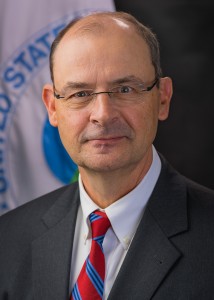Public Health and Environmental Protection
By supporting health professionals and embracing our obligations to promote public health and protect our planet, we can uphold our shared responsibility to preserve the promise of a happy and healthy life for our children and grandchildren.
–President Barack Obama
By Tom Burke
 President Obama recently marked National Public Health Week with a Proclamation noting the inextricable link between public health and protecting the planet. As the Agency’s Science Advisor and Deputy Assistant Administrator for the Office of Research and Development, making that connection is my number one goal.
President Obama recently marked National Public Health Week with a Proclamation noting the inextricable link between public health and protecting the planet. As the Agency’s Science Advisor and Deputy Assistant Administrator for the Office of Research and Development, making that connection is my number one goal.
I am committed to ensuring that what our scientists and engineers learn continually flows to those who can put it to use: public health officials and their partners. At EPA, we are not satisfied until our science has positive impact on protecting drinking water, lowering risks and impacts from environmental exposures, and bringing the benefits of a cleaner environment to every community and citizen.
Luckily, I have a lot of support. I am privileged to work in a place surrounded by some of the world’s leading environmental and public health researchers. They are the go-to experts for every environmental and health related challenge our nation faces. From ongoing efforts to address climate change to the emerging concerns of the potential spread of the Zika virus, EPA scientists and engineers are working tirelessly to protect public health. And what they learn is not only meeting the most immediate threats to public health, but advancing healthier, more sustainable communities for our children and grandchildren.
A great example of how we build partnerships unfolded just this morning when Administrator Gina McCarthy announced that EPA, the Environmental Council of the States (ECOS), and the Association of State and Territorial Health Officials (ASTHO) signed a Memorandum of Agreement to work even more closely together to share information and advance public health protection in the United States. Read more about that exciting news in her blog post, Expanding EPA’s Partnerships with State Health and Environmental Experts.
Watching EPA science reach those who need it most is one of the best parts of my job. While I enjoy that work every day, President Obama’s remarks about National Public Health Week and our partnership with ECOS and ASHTO remind me to stop and savor it just a bit more than usual.
About the Author: Thomas Burke, Ph.D. is the Deputy Assistant Administrator of EPA’s Office of Research and Development as well as the Agency’s Science Advisor. He served as the Jacob I. and Irene B. Fabrikant Professor and Chair in Health, Risk and Society and the Associate Dean for Public Health Practice and Training at the Johns Hopkins Bloomberg School of Public Health before coming to EPA. Before his time at Johns Hopkins, Dr. Burke was Deputy Commissioner of Health for the State of New Jersey and Director of the Office of Science and Research in the New Jersey Department of Environmental Protection.
